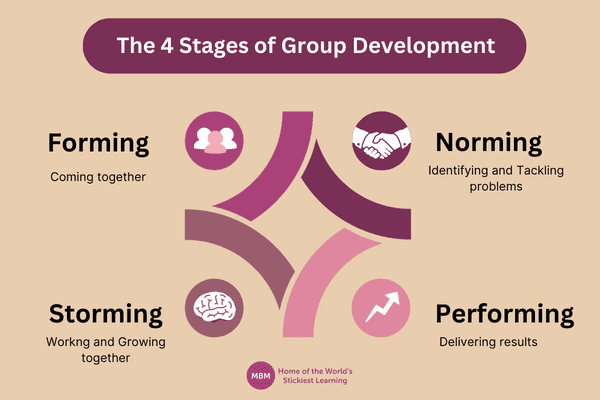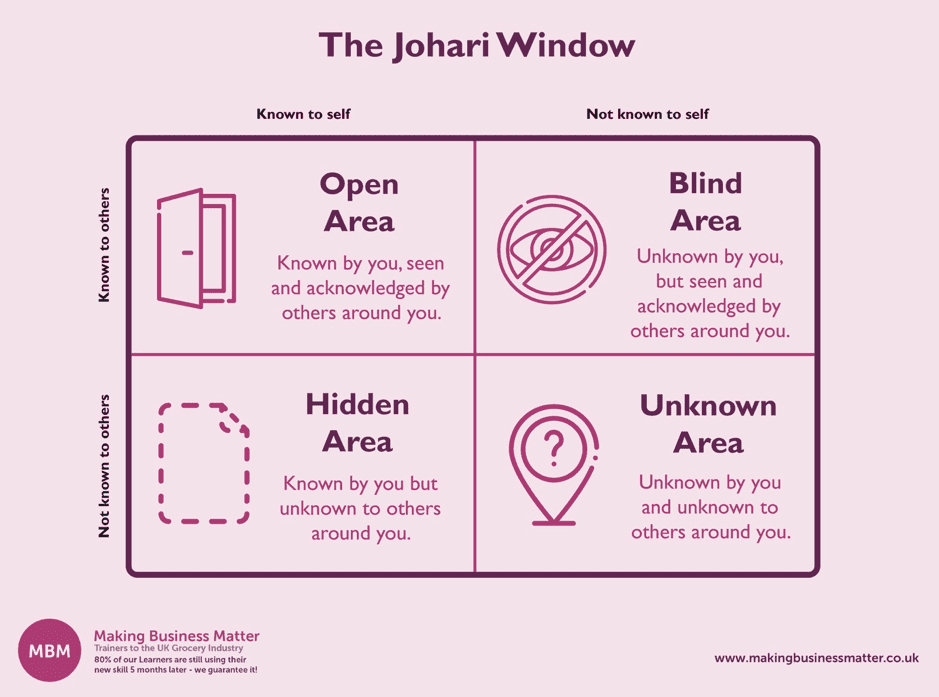Achieving Success Through Synergy and Innovation
In the competitive realm of modern business, success often hinges on one fundamental element: teamwork. Picture a puzzle missing a piece or a symphony without harmony – that’s what an organisation without effective group work feels like. In this article, we delve into the core of group work theory, unveiling the principles that drive achievement in the business world. Whether you’re a seasoned executive, an aspiring entrepreneur, or a team member looking to excel, our exploration of group dynamics, leadership, and collaboration will equip you with the insights to thrive in the business landscape.
Join us as we uncover the art of group work theory, where synergy and innovation combine to unlock unparalleled success.
What are the 4 Principles of Group Work?

1. Clear Objectives and Goals:
Effective groups in a business context begin with clear objectives and goals. All in all, every team member should understand the purpose of the group’s work, the specific goals they aim to achieve, and also the expected outcomes.
2. Open Communication and Collaboration:
Secondly, successful groups prioritise open and transparent communication among team members. Everyone should have the opportunity to express their ideas, provide feedback, and also raise concerns. Furthermore, collaborative tools and practices can facilitate efficient information sharing and idea exchange.
Sticky Learning ® is 7 times more effective than 1-day training courses. Plus, you will get a Chain of Evidence proving your Return on Investment. Discover soft skills training that changes behaviours long term.

3. Roles and Responsibilities:
Defining roles and responsibilities within the group is essential. Moreover, each team member should have a clear understanding of their role and how it contributes to the group’s objectives. Effective delegation and a well-defined hierarchy can also help distribute tasks efficiently.
4. Conflict Resolution and Adaptability:
Conflict is a natural part of group dynamics. Effective groups have mechanisms in place to address conflicts constructively, focusing on finding solutions rather than dwelling on the issues. Additionally, adaptability is crucial as business environments change rapidly, and groups must be prepared to adjust their strategies and approaches as needed.

>> Picture Coaching Cards <<
>> Access on Amazon <<
The Importance of Group Work in Business
#1. The Foundation of Success
In the dynamic landscape of business, the adage “teamwork makes the dream work” couldn’t be more accurate. Moreover, it’s not just about individuals excelling in isolation. Rather, it’s about harnessing the collective intelligence, skills, and talents of a diverse group of people to achieve shared objectives. From start-ups to multinational corporations, organisations of all sizes rely on group work to innovate, problem-solve, and navigate the ever-changing currents of the market.
#2. Amplifying Creativity and Innovation
Now one of the key reasons why group work theory is indispensable in business is its unparalleled ability to foster creativity and drive innovation. When individuals from different backgrounds, experiences, and expertise come together, they bring a multitude of perspectives to the table. This diversity of thought sparks new ideas, challenges existing paradigms, and also encourages out-of-the-box thinking. In group settings, the synergy of minds often leads to breakthrough solutions that propel businesses forward in the competitive race.
#3. Achieving Complex Goals
In the modern business landscape, tasks and challenges have grown increasingly complex. From developing cutting-edge technologies to devising intricate marketing strategies, many objectives are simply too multifaceted for a single individual to tackle successfully. This is where group work shines. By pooling together a team’s collective knowledge and resources, businesses can tackle complex projects with greater efficiency and effectiveness. Additionally, group work not only divides the workload but also capitalises on each team member’s strengths, resulting in higher-quality outcomes and the attainment of ambitious goals.
Group Dynamics
1- The Complex Web of Group Dynamics
At the heart of effective group work lies the intricate web of group dynamics. Understanding how individuals interact within a team setting is crucial for harnessing the full potential of collective efforts. Furthermore, group dynamics encompass the myriad ways in which team members communicate, influence one another, and form connections. This includes the roles individuals naturally adopt, their communication styles, and the emotional dynamics that can either enhance or hinder productivity.
2- Tuckman’s Stages of Group Development
One prominent group work theory model in the study of group dynamics is Bruce Tuckman’s stages of group development, which outlines the typical phases a team goes through. These stages include forming, storming, norming, performing, and adjourning.

During the forming stage, team members get to know each other and establish initial roles. Storming often involves conflicts and disagreements as individuals assert themselves. Norming is marked by the development of cohesion and cooperation, leading to peak performance in the performing stage. Finally, teams adjourn when the project is completed. Recognising these stages can help leaders navigate and guide their teams effectively.
3- Harnessing the Power of Group Dynamics
To maximise group dynamics in a business context, leaders and team members must be aware of their roles, strengths, and communication preferences. Open and transparent communication channels are essential, as is a willingness to address conflicts constructively during the storming phase. By embracing the diversity of perspectives within the team and fostering an environment of trust and collaboration, businesses can leverage the power of group dynamics to drive innovation and achieve their goals with remarkable synergy.
Different Group Work Models

1. Tuckman’s Stages of Group Development:
We’ve already touched on this, but Bruce Tuckman’s model is one of the most widely recognised and studied frameworks for understanding the stages that groups go through as they develop and mature. Recall that Tuckman identified four primary stages: forming, storming, norming, and performing.
During the forming stage, group members get acquainted, and the team’s objectives are established. Storming often involves conflicts and disagreements as members assert themselves and negotiate their roles. In the norming phase, the team begins to cooperate and develop cohesion, and finally, in the performing stage, the group works harmoniously toward achieving its goals. This model provides valuable insights into the dynamics of team development and helps leaders navigate and support their teams at each stage.
2. Belbin’s Team Role Theory:
Meredith Belbin’s group work theory focuses on the different roles individuals naturally take on within a team and how these roles can impact the team’s effectiveness. Belbin identified nine team roles, including the Coordinator, Shaper, Implementer, and more.
Each role has its unique characteristics and contributions. For example, Coordinators excel at facilitating team discussions and decision-making, while Shapers are driven to challenge and motivate the group. Belbin’s model helps teams understand their strengths and weaknesses, encouraging a balanced distribution of roles for optimal performance.
3. The Johari Window:
The Johari Window, developed by Joseph Luft and Harrington Ingham, is a model that focuses on enhancing self-awareness and mutual understanding within groups. It divides information about an individual into four quadrants: the Open (known to self and others), Hidden (known to self but hidden from others), Blind (known to others but not to self), and Unknown (neither known to self nor others).
Click the image for a larger version:

Basically, by promoting open communication and feedback, the model aims to expand the Open quadrant while reducing the Hidden and Blind areas. This process helps team members understand themselves better, improve their relationships, and ultimately work more effectively as a group.
Roles and Responsibilities in Groups
1. Clarity and Accountability:
Assigning specific roles and responsibilities within a group brings clarity to the team’s objectives and expectations. In essence, when each team member knows their distinct role and the tasks associated with it, ambiguity and confusion are minimised. This clarity creates a sense of accountability, as individuals understand what is expected of them and are more likely to take ownership of their responsibilities. This not only ensures that essential tasks are completed but also reduces the risk of duplication or gaps in work efforts. Furthermore, it allows team leaders to track progress more effectively and address any challenges that may arise, ultimately enhancing overall group productivity.
2. Efficient Resource Utilisation:
Effective role allocation enables the efficient utilisation of resources within a group. By matching each team member’s skills, expertise, and strengths with tasks that align with their capabilities, teams can optimise their collective potential. This ensures that individuals are working on tasks that they are best suited for, leading to higher-quality outputs and improved efficiency. Additionally, the delegation of roles can help balance workloads and prevent overburdening specific team members. Consequently, the team’s productivity increases as everyone contributes effectively to achieving the group’s goals.
3. Collaboration and Synergy:
Assigning roles and responsibilities is not solely about dividing work but also about fostering collaboration and synergy within the group. When team members understand how their roles interconnect and contribute to the overall mission, they are more likely to collaborate seamlessly. And this collaboration often leads to the exchange of ideas, shared problem-solving, and mutual support among team members. As a result, the group becomes more than the sum of its parts, harnessing the power of collective effort to accomplish tasks efficiently and achieve its objectives. Effective role allocation promotes a cohesive team dynamic where each member feels valued and indispensable, further boosting group productivity.
Leadership in Group Work

Leadership within a group is like the guiding hand that steers a ship through turbulent waters. It plays a pivotal role in determining the success of a project and the overall performance of a team. Effective leadership sets the tone, provides direction, and influences the team’s motivation and cohesion. A skilled leader is not just a manager of tasks but also a facilitator of collaboration, a problem solver, and a source of inspiration. Without strong leadership, even the most talented group can falter, lacking direction and purpose.
Leadership is particularly crucial in group work theory because it helps establish clear objectives and priorities. A leader can define the project’s scope, allocate roles, and ensure that everyone understands their responsibilities. Moreover, a leader fosters an environment where team members feel heard and valued, encouraging open communication and the sharing of ideas. This, in turn, leads to better decision-making and innovative solutions.
Beyond logistics, leadership also impacts team morale. A supportive and motivating leader can inspire individuals to go the extra mile and deliver their best work. They can resolve conflicts, provide guidance during challenging times, and celebrate successes. Ultimately, effective leadership elevates the group’s performance, making it more resilient and adaptable in the face of obstacles.
Benefits of Diverse Teams
Diversity in teams is not just a buzzword. Rather, it’s a powerful asset that drives innovation and problem-solving. Diverse teams encompass a range of perspectives, backgrounds, experiences, and expertise. This rich tapestry of differences allows for a more comprehensive examination of problems and a wider array of potential solutions. When people from various cultural, educational, and professional backgrounds collaborate, they bring unique insights to the table.
Diverse teams excel at breaking down the barriers of groupthink, a phenomenon where individuals conform to group opinions and lose their critical thinking abilities. In contrast, diverse teams encourage healthy debates and discussions. They challenge assumptions and encourage individuals to think creatively. This dynamic often leads to more robust decision-making and innovative problem-solving approaches.
Furthermore, diverse teams reflect the broader customer base or audience an organisation serves. By mirroring the diversity of their stakeholders, teams can better understand their needs, preferences, and pain points, ultimately resulting in more effective solutions and products. Additionally, diverse teams tend to be more adaptable in rapidly changing environments, as they are accustomed to navigating different perspectives and adapting to new challenges.
Measuring Group Performance

Measuring group performance is essential for ensuring that a team is on track to achieve its objectives and for identifying areas that may require improvement. So to gauge the effectiveness of group work, organisations often rely on a set of key performance indicators (KPIs) and metrics. These metrics provide valuable insights into various aspects of the team’s performance and also help in making data-driven decisions.
1. Project Progress and Milestones:
Tracking project progress and reaching milestones is a fundamental way to measure group performance. Milestones serve as markers along the project timeline, and achieving them indicates that the team is making steady progress. Metrics such as task completion rates, deadlines met, and the adherence to project timelines are critical in assessing how efficiently the team is moving towards its goals. Tools like Gantt charts and project management software are also often used to visualise and monitor these metrics.
2. Quality of Output:
The quality of the group’s output is another crucial dimension of performance measurement. This can be evaluated through various metrics, depending on the nature of the project. For instance, in software development, metrics might include the number of bugs or defects in the code, while in marketing, metrics could involve the conversion rate or the return on investment (ROI) of a campaign. Assessing the quality of work ensures that the team’s efforts are aligned with the organisation’s standards and expectations.
3. Team Engagement and Satisfaction:
Group work theory emphasises that group performance is not just about achieving results. Actually, it’s also about maintaining a healthy and motivated team. Measuring team engagement and satisfaction can be done through surveys, feedback mechanisms, or regular check-ins. High levels of engagement and satisfaction often correlate with increased productivity and innovation. Conversely, low levels may indicate underlying issues that need to be addressed, such as conflicts, workload imbalance, or communication breakdowns. By regularly assessing team well-being using group work theory, organisations can proactively address concerns and foster a positive work environment that supports long-term performance.
Challenges in Group Work

Working in a group can be immensely rewarding, but it also presents a unique set of challenges that teams must navigate to achieve success. Understanding and addressing these challenges is crucial for maintaining productivity and harmony within a group. Here, we identify some common challenges in group work and offer strategies for overcoming them.
1. Communication Issues:
Effective communication is the lifeblood of any successful team. However, it’s one of the most common challenges. Misunderstandings, misinterpretations, and a lack of clear communication can derail projects. To address this challenge, establish open lines of communication from the outset. Encourage team members to ask questions, seek clarifications, and also provide regular updates. Additionally, employ collaboration tools and project management platforms to facilitate transparent communication. Additionally, fostering active listening within the team helps ensure that all members feel heard and valued.
2. Conflict and Disagreements:
Differences in opinions and approaches are natural in group work and can lead to conflicts. However, when managed constructively, conflicts can stimulate creativity and lead to better decision-making. To overcome this challenge, encourage a culture of respectful disagreement within the team. Establish clear conflict resolution processes that allow for discussion and compromise. Team leaders should mediate when necessary and ensure that conflicts are resolved in a way that doesn’t harm team cohesion.
3. Uneven Workload Distribution:
In some groups, an uneven distribution of work can cause frustration and resentment among team members. So to address this challenge, define roles and responsibilities clearly from the start. Ensure that tasks are distributed based on team members’ strengths and expertise. Regularly assess workloads and make adjustments as needed. And encourage accountability within the team, so members take ownership of their tasks. If imbalances persist, have open discussions about workload and seek to find equitable solutions that distribute responsibilities more fairly.
Conclusion
In the world of business, the principles of group work theory are indispensable. They emphasise the vital role of teamwork, the nuances of group dynamics, the importance of clear roles, the impact of effective leadership, the benefits of diverse teams, and the significance of measuring performance. These principles, when applied with dedication and adaptability, form the bedrock of organisational excellence. By embracing them, businesses can harness the collective strength of their teams and navigate the complexities of the business landscape, ultimately achieving success through collaborative effort and innovation.
Check out our content on YouTube.




